Mersea Island, tucked into England’s Essex coast about 50 miles east northeast of London, is only truly an island twice a day, when the high tide covers the causeway that connects it to the mainland. There’s open water to the island’s southeast side at the junction of the Colne and Blackwater estuaries, and to the northwest mile after mile of tidal salt marsh with a wealth of wild waterfowl. This is the spiritual home of the Milgate duck punt.The village of West Mersea occupies the southwest quadrant of the island, and has always lived by whatever the water and marshes could provide, so boats have long been an essential part of daily life. One of the many local businesses was a boatyard once owned by William Wyatt, who, as well as repairing the local fishing smacks and yachts, was also the local punt builder of choice. John Milgate, born in a cottage called Smugglers’ Way, just a few yards from Wyatt’s punt shed, started work at the yard at the age of 13, just after the Second World War. His retirement, 55 years later in 2001, didn’t stop him working on boats; he simply carried on in his own shed at home. The restoration of his 1892 smack, PURITAN OF COLCHESTER, was always going to be a lengthy job, so John wanted a simple, inexpensive boat to get him onto the water quickly, whenever the mood took him. He decided he needed a duck punt. Setting the leeward chine deep in the water gives the hull lateral resistance for windward work.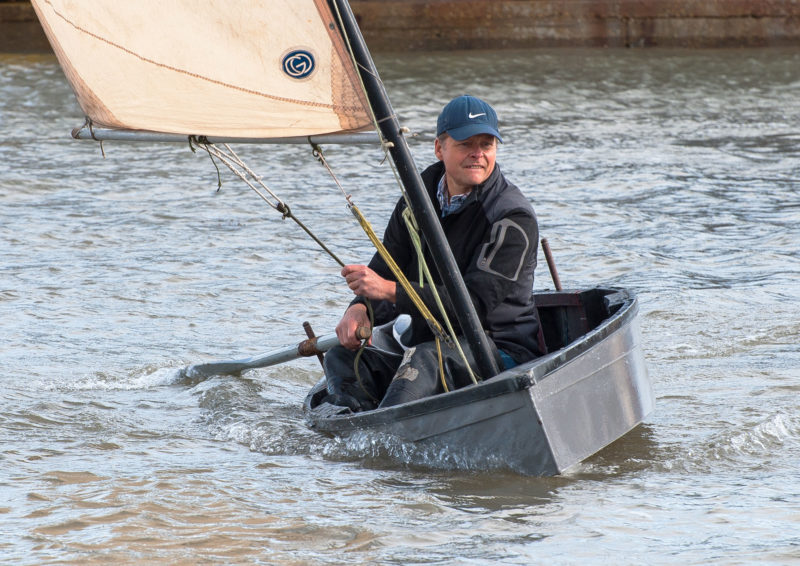 Gill Moon
Gill Moon
Join The Conversation
We welcome your comments about this article. If you’d like to include a photo or a video with your comment, please email the file or link.
Comments (5)
Comments are closed.

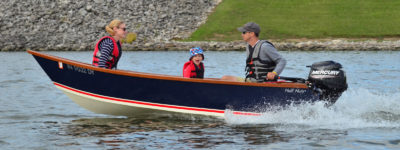
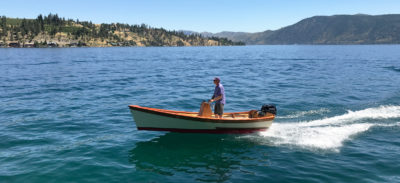
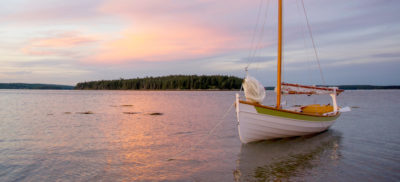
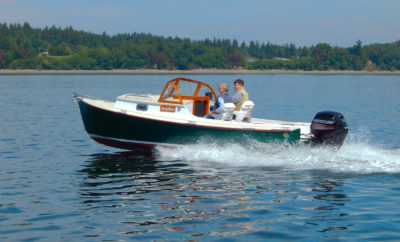
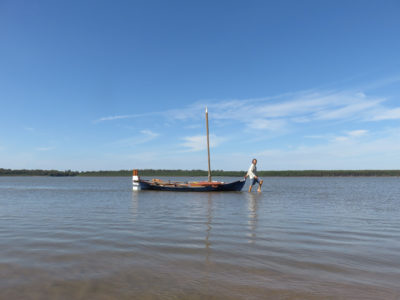
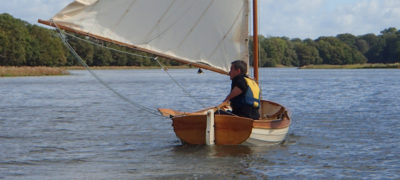
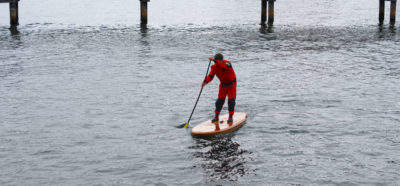

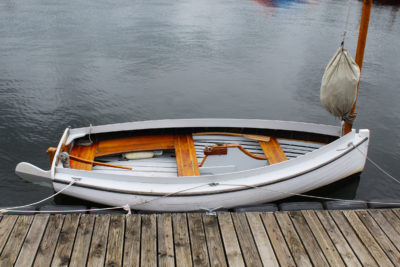
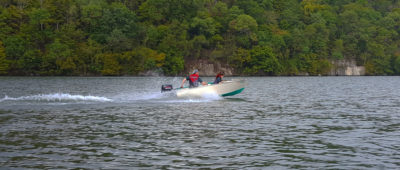
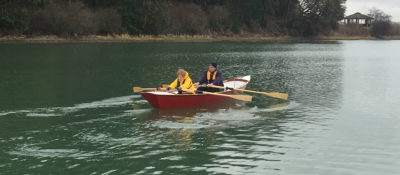
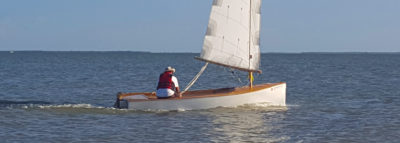
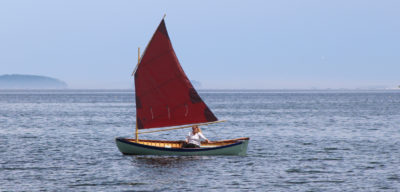
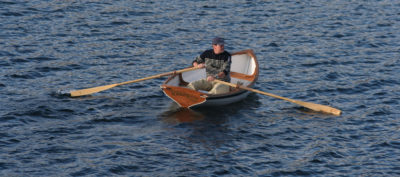
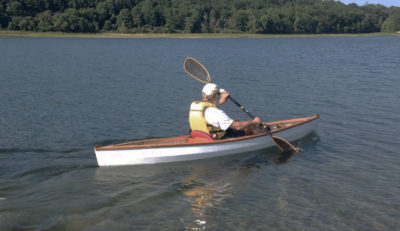
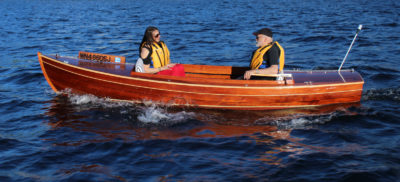
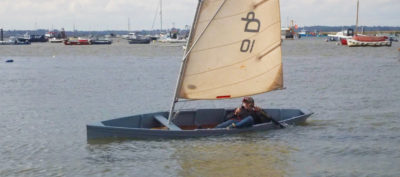
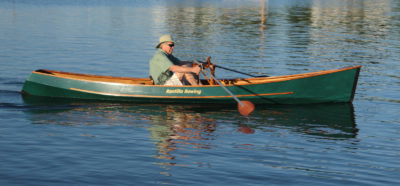
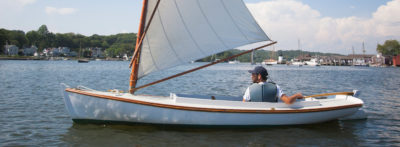
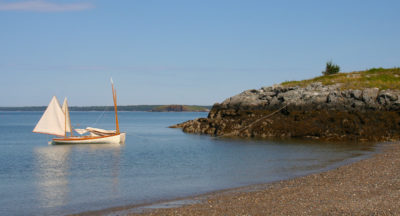
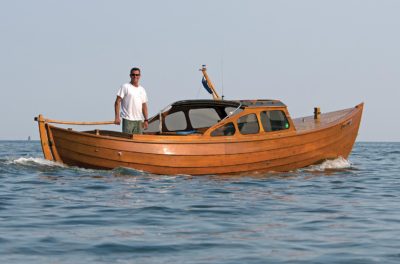
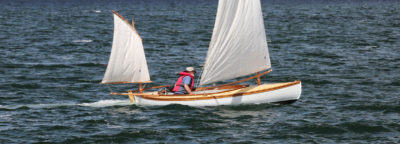
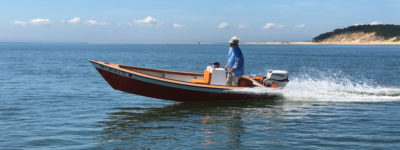
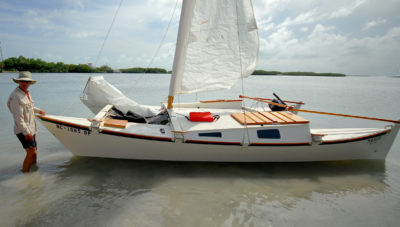
I have sailed many boats over the years, but none have brought me as much joy as THE DONKEY, my duck punt. For those who are interested in building a duck punt, I have a blog detailing the process of building mine and a large collection of the best Duck Punt sailing videos on my Youtube channel. I can’t encourage you enough to build one! They are inexpensive, lightweight, super fun, and will teach you more about sailing than you think you already know. And where else can you find a boat you can sail in 6″ of water?!
Some of the videos Rusty has collected were created by Martin “Lurch” Blackmore, the skipper of DP 10 seen above. Lurch has a Youtube channel—lurch1e—with videos of duck punts and other boats.
Christopher Cunningham
Editor, Small Boats Monthly
This boat has been “on my radar” for a bit. I think this article just pushed me over the tipping point, and I am going to have to build one now.
I do have one question: what length of oars are used/recommended?
I believe the “class rules” state that your oar be no shorter than below your nose or longer than the top of your head when standing up straight, although there must be a handicap for sailors of diminished stature. I just use a canoe paddle so I would be a laughing stock in Mersea.
Yes, build one!!!
My apologies for taking a while to join the conversation. I’d say that the ethos of the Essex coast in general (and Mersea in particular), is firmly based on what works, rather than any written rules; since “what works” usually includes the question of cost, if you’ve got a canoe paddle handy, no Mersea man would criticize you for not wasting resources on a longer one!
By the way, I spoke to John Milgate this morning, who tells me that his neighbor let off his punt gun yesterday evening, and that various passers by thought that the local power station had blown up. From the perspective of a dozen or so Teal, it might as well have done.